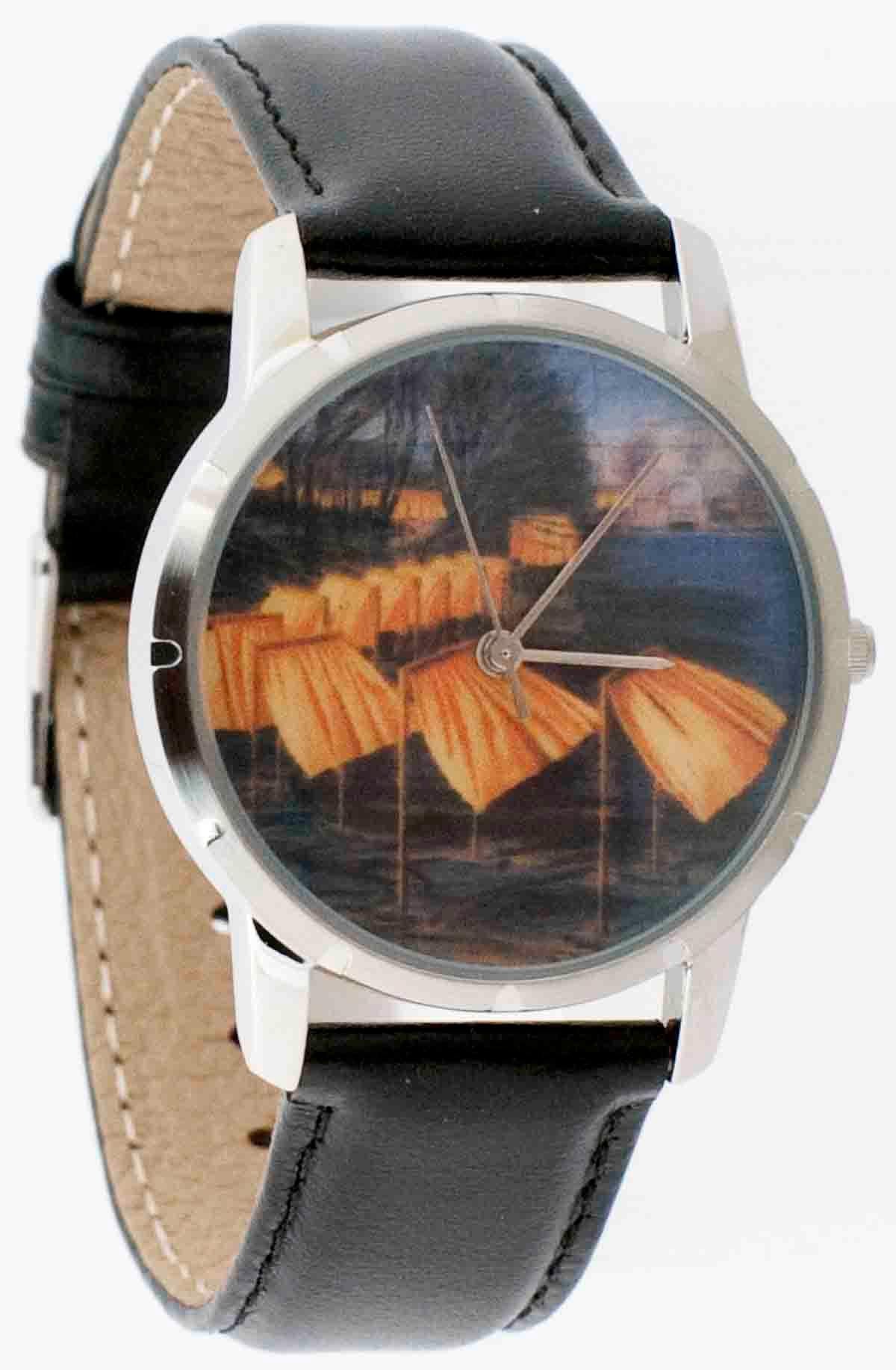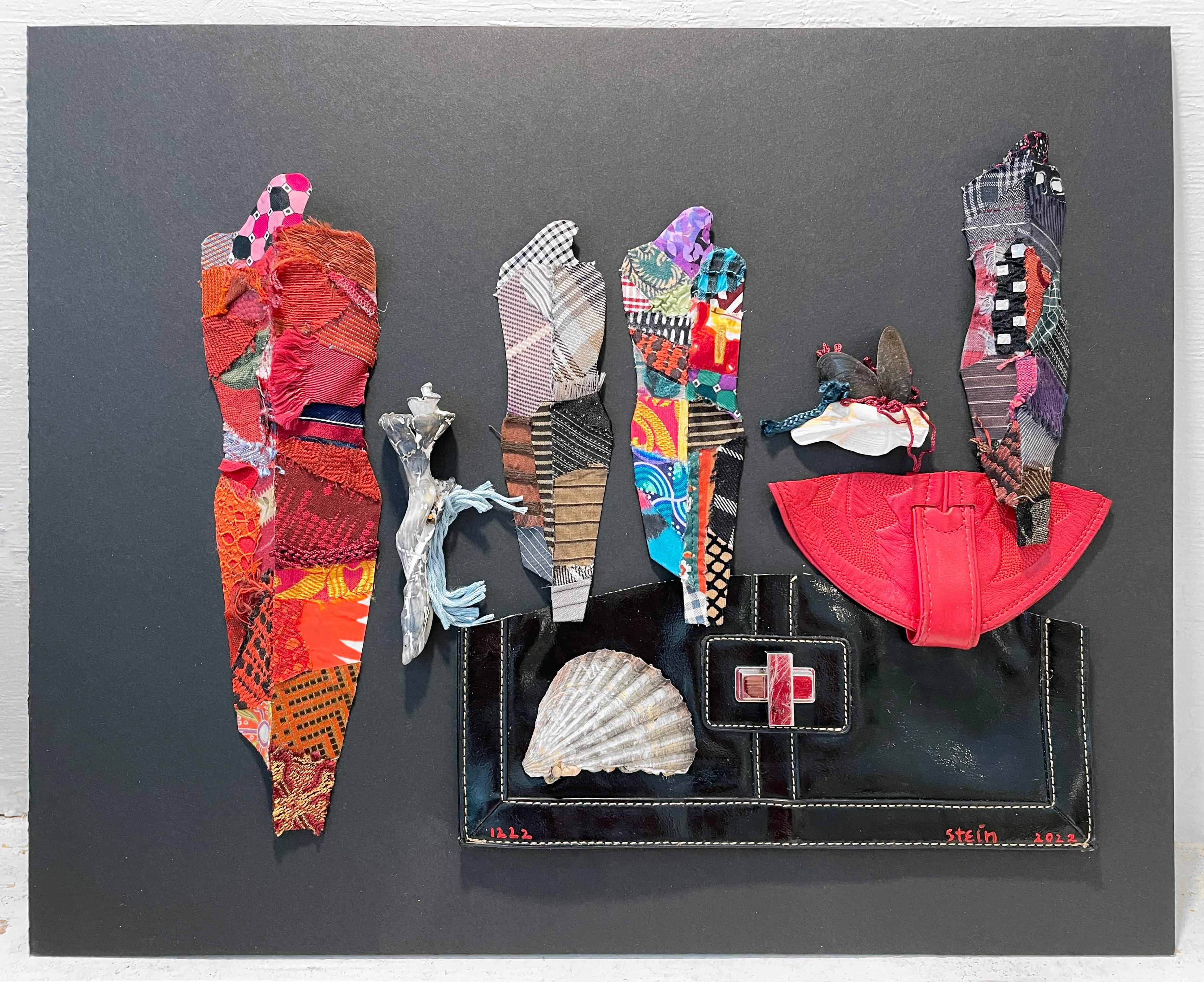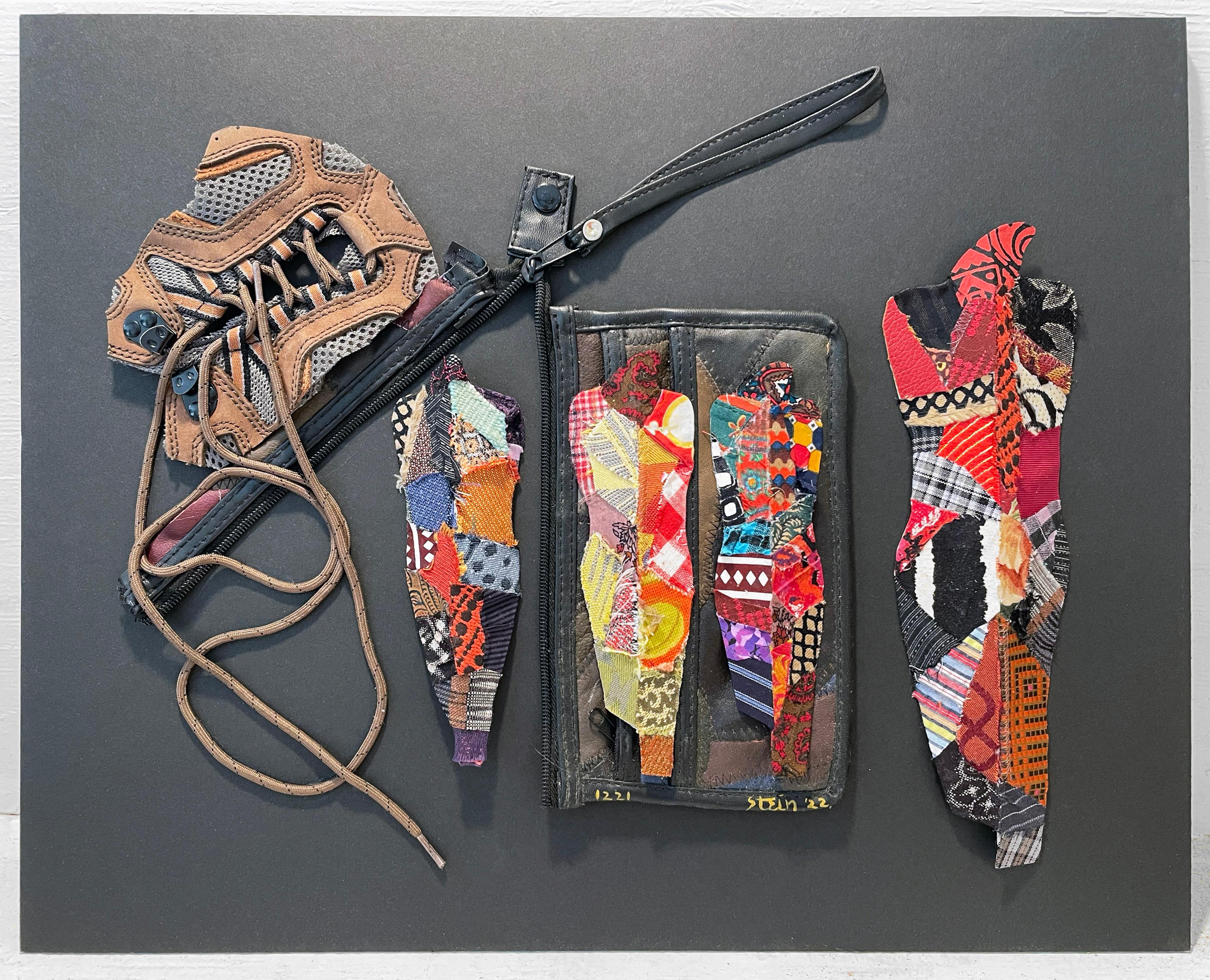Items Similar to Antique Thai Shadow Puppet, Buffalo Hide, Nang Yai
Want more images or videos?
Request additional images or videos from the seller
1 of 4
UnknownAntique Thai Shadow Puppet, Buffalo Hide, Nang Yai
About the Item
Antique Thai Shadow Puppet. Puppet is hand carved and constructed of buffalo hide. Overall measures 40 x 22 inches. Framed dimensions are 50 x 34 3/4 inches.
Provenance:
Private Collection, Atlanta, Georgia
One of the oldest forms of theater is Thai Shadow Puppets, which dates back as early as 400 B.C.. Originally, this art derived from India, then through to Thailand. In Thai culture, the tradition is telling stories through the use of a shadow puppet. The performance, the story, and the puppets used vary among different region in Thailand.
Initially, the appearance of the Thai shadow puppets tend to be flat, and handmade to leather. The puppet is made with the skin of the cow, or water buffalo. The skin is placed in water to soften the material, then pounded until the skin is semi-transparent. In order for the artists to carve and paint the leather to create the characters in the play, all of the steps in making it must be done. The art called “nang,” translates to hide.
To showcase the performances, a puppeteer must be placed behind a white, thin sheet, with a light shining from behind. This projects a shadow of the puppet cut out that the audience can see. Prior to the use of the electric light bulb, puppeteers used oil lamps. Bringing the puppet to life requires the use of wooden or bamboo sticks to control the puppet’s movements, such as walking, dancing, or even speaking. Not only does the puppeteer have to monitor the puppets actions, they must narrate the story from behind the white screen, and create a voice for each of the different characters used. Occasionally, another individual or group may play musical instruments to add excitement and pleasure to the performance.
The art of Thai shadow puppets is not only to manipulate the figures, but to portray an abundant repertoire of stories. During the performance, puppeteers do not use a script. The puppeteers rely solely on their memory, while improvising. Thai shadow puppetry has been commercialized for entertainment, and created for the tourist, while promoting cultural heritage. Thai shadow puppets tradition is reciting the stories of gods and humans through love and current events. (Miller).
The Nang is classified into two groups. One is called Nang Talung, whereas the other is Nang Yai. Nang Talung uses leather puppets which have movable limbs controlled by a string. Another grander version of the shadow puppet art is called Nang Yai, which means big hide, so the shadow puppets are more life sized. Both styles and themes are relatively similar. These two types of Nang are presented to the Thai society, while being universally acknowledged throughout Thailand. Nang performances themes include adventures of a wanderer, romance like star crossed lovers, masters teaching magic to their apprentice, family conflict, or abandoned children who seek to find their loved ones. The Nang pursue to pass on to the audience the significance of Thai ideologies and values. Last remnants of the Thai tradition and shadow puppets is the Nang.
The presenters and teachers of the type of Thai shadow puppetry, Nang Talung are known as Nai Nang. There are over 300 in the South of Thailand. The Nai Nang must have a range of story lines and techniques, and incorporate it into the Thai shadow puppet characters. By doing this, it will ensure that the fluidity and rhythm of the performance maintains the audience’s interest. Nai Nang are highly respected and intertwined into the Thai cultural fibers. Although the Nang was based on Buddhist ideology and philosophy, they also incorporated Hindu iconography and characters.
Thai shadow puppets theatre is for audiences of all ages, not just the younger generation. The tradition of shadow puppets exist throughout Asia, not just Thailand; however, the main focus was Thai culture. The shadow puppets create a sense of divine inspiration, as well as mystery. These shadows are considered sacred. They have roots in religious observances, embodying Brahmanism, Hinduism, Buddhism, and ancestral worshipping. “The art of the puppeteer developed from ancient animalistic beliefs whereby every object, animate or inanimate, has a soul.” The puppets, in all cultures, are treated with respect. They are revered as vessel of living energy. Preceding each performance is both prayers and offerings, where the puppet master requests for protection and blessings.
Many of the Thai shadow puppet performances have a consistent religious theme. The reenactments in the performances have an episodes of the Hindu epics, Ramayana. The Ramayana epic contains a variety of individual stories. The shadow puppet represent social organization and hierarchy. In addition, it represents harmony, while signifying the universe, and symbolizing the difficulties faced in harmony and chaos, the good and the evil, and endeavor to reach a balance.
- Dimensions:Height: 50 in (127 cm)Width: 34.75 in (88.27 cm)
- Medium:
- Period:
- Condition:Excellent.
- Gallery Location:New York, NY
- Reference Number:1stDibs: LU184129905202
About the Seller
5.0
Platinum Seller
These expertly vetted sellers are 1stDibs' most experienced sellers and are rated highest by our customers.
Established in 2021
1stDibs seller since 2022
61 sales on 1stDibs
Typical response time: 1 hour
- ShippingRetrieving quote...Ships From: New York, NY
- Return PolicyA return for this item may be initiated within 3 days of delivery.
More From This SellerView All
- "A Cloudy Day, " View of Montclair, New Jersey, Tonalist, Barbizon SceneBy George InnessLocated in New York, NYGeorge Inness (1825 - 1894) A Cloudy Day, 1886 Oil on canvas 25 x 30 inches Signed and dated lower center Provenance: The artist Estate of the above Fifth Avenue Galleries, New York, Executor's Sale of Paintings by the Late George Inness, N.A., February 12 - 14, 1895, Lot 132 Joseph H. Spafford, acquired from the above Mrs. Spafford, by bequest from the above Leroy Ireland, New York, 1951 Ernest Closuit, Fort Worth, Texas Meredith Long & Company, Houston, Texas, circa 1960 Private Collection Shannon's Fine Art, American and European Fine Art Auction, October 27, 2016, Lot 42 Exhibited: New York, American Fine Arts Society, Exhibition of the Paintings Left by the Late George Inness, December 27, 1894, no. 90. Literature: LeRoy Ireland, The Works of George Inness: An Illustrated Catalogue Raisonne, Austin, Texas, 1965, p. 336, no. 1324, illustrated. Michael Quick, "George Inness: A Catalogue Raisonne," Vol. II, New Brunswick, New Jersey, 2007, pp. 282-83, 311, no. 966, illustrated. George Inness, one of America's foremost landscape painters of the late nineteenth century, was born in 1825 near Newburgh, New York. He spent most of his childhood in Newark, New Jersey. He was apprenticed to an engraving firm until 1843, when he studied art in New York with Regis Gignoux, a landscape painter from whom he learned the classical styles and techniques of the Old Masters. In 1851, sponsored by a patron, Inness made a fifteen-month trip to Italy. In 1853 he traveled to France, where he discovered Barbizon landscape painting, leading him to adopt a style that used looser, sketchier brushwork and more open compositions, emphasizing the expressive qualities of nature. After working in New York from 1854 to 1859, he moved to Medfield, Massachusetts, and four years later to New Jersey, where through a fellow painter he began to experiment with using glazes that would allow him to fill his compositions with subtle effects of light. Duncan Phillips remarked on Inness’s mellow light as a unifying force, saying, “…he was equipped to modernize the grand manner of Claude and to apply the methods of Barbizon to American subjects." At this time also, Inness developed an interest in the religious theories of Emanuel Swedenborg...Category
1880s Hudson River School Landscape Paintings
MaterialsOil, Paint, Canvas
- "Lemons and Pear" Marsden Hartley, Colorful Fruit Still Life, Modern ArtBy Marsden HartleyLocated in New York, NYMarsden Hartley Lemons and Pear, circa 1922-23 Oil on canvas 9 x 10 3/4 inches Provenance: Adelaide Shaffer Kuntz, Bronxville (Hartley’s friend and patron) Bertha Schaefer Gallery, New York (acquired from the above) Private Collection, Stamford, Connecticut (acquired from the above) Barridoff Galleries, Portland, Maine, April 7, 1984, Lot 29 (as Still Life with Pear and Lemons) Richard Ward Foster (acquired at above sale) Sotheby's New York, American Art, October 6, 2017, Lot 32 Private Collection (acquired from the above) Exhibited: (possibly) Kantstrasse, Berlin, Private showing in artist’s studio, 1923. (possibly) New York, Bertha Schaefer Gallery, Still Life Painting by European and American Painters, 1944. Born in Lewiston, Maine, Marsden Hartley became one of the most famous early modernist artists of twentieth-century American art, known for landscapes, still lifes, and some portraits. His painting showed a focus on monumental shapes, especially clouds and landscape forms, and his unique style has been described by critic Sadakichi Hartmann as "an extreme and up-to-date impressionism" and "emerging modernism that evolved through Impressionism". (Gerdts 291) He had a lonely, insecure childhood because his mother died when he was eight years old, and he was raised by an older sister when his father left to remarry. He studied art in Cleveland, Ohio and then in 1898 went to the Chase School in New York and at the National Academy of Design. He continued to spend much time in Maine painting landscapes, and by 1909 had his first exhibition, which was held at New York Gallery 291, run by Alfred Stieglitz. There he became involved with a social circle of modernists that included Georgia O'Keeffe, Arthur Dove, and John Marin. In 1912, he first went to Europe where he had further exposure to modernism, and from 1913 to 1915 he was in Germany. In Paris, he experimented with Cezanne-like still lifes and was befriended by Gertrude Stein. In Germany, he was influenced by Expressionism, and especially by military pageantry. It is said that his greatest contribution to early 20th-century American modernism has been his brilliant synthetic military icons known as German Officer Portraits. He developed a close homosexual relationship with a handsome young Prussian officer who was killed in World War I. Being encouraged by Stieglitz to explore American subjects, Hartley turned to American Indian objects...Category
1920s Still-life Paintings
MaterialsCanvas, Oil
- "Untitled" Dan Christensen, Geometric Plaid Series, Orange and Blue AbstractBy Dan ChristensenLocated in New York, NYDan Christensen Untitled, circa 1970-71 Acrylic and enamel on canvas 44 x 20 inches Provenance: The artist Sherron Francis (gift from the above) Dan Christensen was an American abs...Category
1970s Abstract Geometric Abstract Paintings
MaterialsEnamel
- "Fruit" Georgina Klitgaard, Apples and Pears Still Life, Woodstock Female ArtistBy Georgina KlitgaardLocated in New York, NYGeorgina Klitgaard Apples and Pears Still Life Signed lower right Oil on canvas 8 x 10 inches Georgina Klitgaard’s art has sometimes gotten lost in the critical propensity to assign artists to membership in one school or another. Unfortunately for her posthumous reputation, Klitgaard defied easy characterization. She was a U.S. modernist, working in both oil and watercolors, but never abandoned figurative painting. She made her reputation in landscape but also excelled in portraits, flower studies, and even cityscapes. Yet despite Klitgaard’s ambiguous status in art history, her paintings continue to fascinate viewers attracted to the unsteady ground between twentieth-century realism and expressionism. Georgina Klitgaard (née Berrian) was born in Spuyten Duyvil, New York (now part of the Bronx); the Berrians had lived in the area since at least the U.S. Revolution. After graduating from Barnard College, she studied art at the National Academy of Design. In 1919 she married Kay Klitgaard, a Danish artist and writer. The next year, her life took a decisive turn when the couple visited friends in Woodstock, NY—about 120 miles north of New York City--and fell in love with the area. In 1906, L. Birge Harrison helped found the Art Students League Summer School in Woodstock and the area became a magnet for landscape painters. The Klitgaards bought a house in 1922 on a steep ledge at the end of Cricket Ridge, high above Bearsville, which provided panoramic vistas overlooking the Catskill Mountains and the Hudson Valley. Klitgaard joined the artists’ colony in the area, which at the time included artists Ernest Fiene and Katherine Schmidt. Klitgaard exhibited widely and her career slowly developed momentum. She was a regular contributor at Whitney Museum shows from 1927 to 1944. In 1929, she exhibited a painting entitled “Carousel” in the Whitney Studio Club’s famous exhibition “Circus in Paint.” Gertrude Vanderbilt Whitney acquired five paintings by Klitgaard in the early 1930s and served as a significant patron for the artist. Klitgaard s New York dealer, Frank Rehn...Category
Early 20th Century Modern Still-life Paintings
MaterialsCanvas, Oil
- "Woman on a Staircase, Sketch" Everett Shinn, Ashcan School, Theater SceneBy Everett ShinnLocated in New York, NYEverett Shinn Woman on a Staircase, Sketch, circa 1935 Signed on the reverse and on the stretcher Oil on canvas 30 x 25 inches Everett Shinn, a future member of the Eight and remark...Category
1930s Ashcan School Figurative Paintings
MaterialsCanvas, Oil
- "Untitled" Sherron Francis, Female Abstract Expressionism, Black Color FieldBy Sherron FrancisLocated in New York, NYSherron Francis Untitled, 1973 Acrylic on canvas 70 x 48 inches Artists such as Helen Frankenthaler, Morris Louis, Dan Christensen, and Sam Francis are already well-known names. How...Category
1970s Abstract Expressionist Abstract Paintings
MaterialsCanvas, Acrylic
You May Also Like
- Javacheff Christo-The Gates-.25" x 1.5"-2005-Contemporary-Black & WhiteLocated in Brooklyn, NYLimited Edition Watch created for Christo and Jeanne-Claude's "The Gates" project, held in February, 2005 in New York's Central Park. The face of the watch features several of the G...Category
Early 2000s More Art
MaterialsLeather
- "Bartender c1950s Mixing Drinks"Located in Bristol, CTArt Sz: 10 1/2"H x 16 1/2"W Frame Sz: 12 1/4"H x 18 1/4"W Vintage morocco leather bartender serving up savoury concoctions c1950sCategory
1950s More Art
MaterialsLeather, Board
- The all-seeingLocated in Fairfield, CTBallpoint pen and leather dye on cowhide 65 x 43 in. This piece is currently unframed and framing is additional.Category
2010s Contemporary More Art
MaterialsAnimal Skin, Dye, Ballpoint Pen
- Linda Stein, 1222 - Contemporary Art 3D Mixed Media Fabric Sculptural CollageLocated in New York, NYLinda Stein, 1222 - Contemporary Art 3D Mixed Media Fabric Sculptural Collage Linda Stein started her Knights of Protection series after she was forced to evacuate her New York down...Category
2010s Contemporary Mixed Media
MaterialsLeather, Fabric, Mixed Media, Board
- Linda Stein, 1223 - Contemporary Art 3D Mixed Media Fabric Sculptural CollageLocated in New York, NYLinda Stein, 1223 - Contemporary Art 3D Mixed Media Fabric Sculptural Collage Linda Stein started her Knights of Protection series after she was forced to evacuate her New York down...Category
2010s Contemporary Mixed Media
MaterialsMetal
- Linda Stein, 1221 - Contemporary Art 3D Mixed Media Fabric Sculptural CollageLocated in New York, NYLinda Stein, 1221 - Contemporary Art 3D Mixed Media Fabric Sculptural Collage Linda Stein started her Knights of Protection series after she was forced to evacuate her New York down...Category
2010s Contemporary Mixed Media
MaterialsLeather, Fabric, Mixed Media, Board





